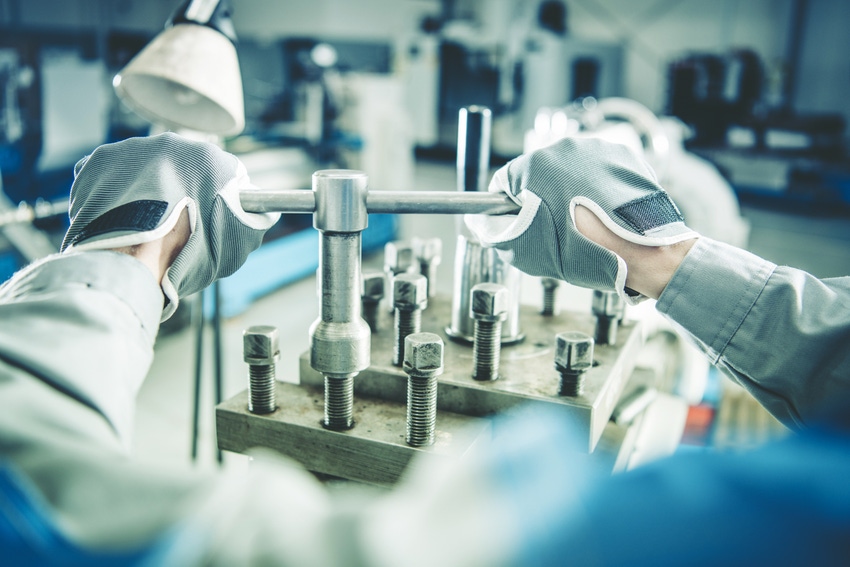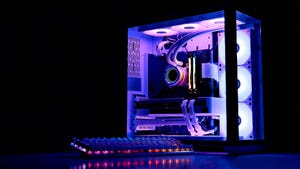March 29, 2018

By Ciarán Daly
LONDON, UK - The critical intersections between AI and the Industrial Internet of Things (IIoT) are often overlooked. But today, some pundits believe neither technology can succeed without the other.
With an estimated $6 trillion USD worth of investments between 2015 and 2020, you might wonder why the IoT has fallen out of favour in the tech hype cycle. Indeed, AI has overtaken the IoT as the buzzword of the day, with many companies rushing to implement predictive analytics and machine learning solutions as quickly as possible.
However, the large-scale disruption of the global economy and workplace practices promised by AI and predicted by pundits cannot come to pass without the integration of AI and IoT technologies. AI needs data, and lots of it, but there remains a significant gap between advances in machine learning and AI techniques on the one hand, and the huge volumes of data AI needs to be effective on the other.
AI and IIoT: made for each other
AI is nothing without data; the Internet of Things is nothing but data. The IoT is often spoken about in terms of consumer products - smart speakers, smart energy meters, or smart fridges bringing connectivity to the home. But once you consider the scale of industrial goods and production, though, the industrial applications of the IoT clearly dwarf the consumer market by several orders of magnitude. The Industrial Internet of Things (IIoT) can be loosely defined as the incorporation of connected sensor technology into industrial processes in order to generate real-time data across the supply chain - and it's in this space that AI can, and will, have the greatest impact.
Implementing the IoT has thus far been seen in terms of connectivity, and the challenge for companies has been the need to convert their connected sensor data into actionable insights. Thanks to the IoT, the total amount of data created by any device will reach 847 zettabytes per year by 2021, up from 218ZB p.a. in 2016. "The IoT, at its most basic, can be defined as a connectivity technology that enables us to draw quantitative data from any object imaginable in real-time," says Jens Wunderlin, Digital Supply Chain Strategy Lead for PwC. "The questions that follow, then, are 'what do I do with that data?'; 'how do I make a business case out of it for my operations?'"
[caption id="attachment_11032" align="alignleft" width="300"] Jens Wunderlin, Digital Supply Chain Strategy Lead @ PwC UK[/caption]
Jens Wunderlin, Digital Supply Chain Strategy Lead @ PwC UK[/caption]
Bringing AI to industry and using it to leverage the vast data lakes produced by the Industrial IoT holds the answer. In the recent Made Smarter report on the future of the digital economy, the British government argued that, in order to be a success, "data intensive technologies such as AI and machine learning will require suitable connectivity technologies to provide the means for time-critical cost efficient data collection from the IIoT across manufacturing environments and the supply chain."
You don't have to look far for a use case. They're 'everywhere', says Wunderlin. Machine learning-powered rapid testing during the industrial design process can enable greater programme and cost certainty than previously realisable. Thanks to AI and smart sensors, systems can now not only predict when and where machinery and equipment is going to need maintenance with a high degree of accuracy, but act on that need. With reduced equipment downtime emerging as a result, there's huge implications for process optimisation across production lines. Meanwhile, connected equipment across the supply-chain provides real time data which can be utilised by machine learning and predictive analytics technologies.
"If you work from demand forecasting all the way through to supply, you can already see lots of data analytics and AI in use," Wunderlin argues. "The key is to identify the areas where it actually makes sense to invest and where it will strengthen your differentiation capabilities."
Data and talent: obstacles to the Intelligent IIoT?
You may already utilise sensor technology across your supply chain, or you could be right at the start of your journey implementing future tech in your business. Regardless, the challenge ahead involves working out how to leverage AI and the IIoT for business transformation - and that requires a new leadership mindset.
[caption id="attachment_11028" align="alignright" width="300"] Martin Musk, GE Alliance Leader @ PwC UK[/caption]
Martin Musk, GE Alliance Leader @ PwC UK[/caption]
"Part of the problem at the moment is that a lot of these initiatives feel quite technology-led," argues Martin Musk, PwC UK's General Electric Alliance Leader. "However, the challenge for many organisations with big in-house engineering functions and manufacturing expertise is largely cultural." Musk describes an initial 'phase of denial', in which experienced engineers who work with the machinery and equipment day-to-day won't trust the data presented to them and therefore won't act on it. For Musk, the biggest challenge is bringing these users on the journey: "You've got to show that AI enables your most experienced people to add value in new ways by letting the data do a lot of the work for them."
PwC and General Electric began their partnership back in September 2016, and Musk has led the partnership since then.. He explains that GE's technologies cover a wide range of IIoT applications across utilities, power, oil and gas, and renewables, as well as industrial manufacturing, products, and services. Based on his experience, Musk believes we need to apply more of a business lens to the different tech solutions in order to really deliver the outcomes.
"From a leadership perspective, this requires leaders with a fully digital outlook, with an appreciation of the potential and the risks, and the ability to think through organisational and people issues as well as the technology issues. It also requires a new mindset across the organisation - one that questions how these technologies deliver real business benefits."
Business transformation is anything but plug-and-play
This, of course, demands a certain amount of movement from within the organisation to grapple with the realities of the technologies being deployed. Critical levels of tech and data illiteracy continue to persist across businesses, and the talent gap between tech vendors developing AI and everybody else remains acute.
"When people talk about data analytics and AI, they think it's plug-and-play," says Wunderlin. "They have a set of data, and they let the machine run over it, and at the end of it, they think they'll have the perfect solution. This might be the case in future, but today, it's simply not true. You need a lot of capabilities and expert insights to make it happen.
The second challenge is always data quality. If a machine wants to predict something, it always needs a cause and an effect. To return to the example of predictive maintenance, a sensor might detect a weak point in a piece of equipment, and then you need to be able to break that down and relay it back to the machine so it can learn and understand which variable caused it to happen. "For a machine to do that, it requires really good data," Wunderlin explains.
The key questions businesses need to be asking are:
'Do I have the right sensors in the right place?'
'Is the data I am storing good enough to make predictive analytics feasible?'
'Do I have the right information necessary to conduct these analytics?'
"The challenge really lies in being able to connect the right people with the right data," Wunderlin argues, "On a basic level, companies are already really successful in this, but when it comes to a more complex situation in which the client has thousands of sensors and even more potential incidents, they might struggle to align the data and find the right patterns behind them.
The technology is, of course, a primary element in the success of any AI or IIoT initiative, but at the end of the day, it's the organization's approach that will determine the success of any solution. You might have the best analytics software in the world, but unless you have a data-savvy team ready and willing to make it work, your efforts could fall flat.
"You need to be thinking about the different moving parts that need to be brought together to make that happen, instead of thinking 'here's a really interesting piece of technology that will give me some insights'," says Musk. "If the thought process ends there, then the business benefits you're looking for will never arrive. A business-led approach to AI and IIoT can actually help all of us, and will help all companies really realize the benefits of these technologies sooner rather than later."

Based in London, Ciarán Daly is the Editor-in-Chief of AIBusiness.com, covering the critical issues, debates, and real-world use cases surrounding artificial intelligence - for executives, technologists, and enthusiasts alike. Reach him via email here.
About the Author(s)
You May Also Like


.jpg?width=700&auto=webp&quality=80&disable=upscale)
.jpg?width=700&auto=webp&quality=80&disable=upscale)
.jpg?width=700&auto=webp&quality=80&disable=upscale)


.jpg?width=300&auto=webp&quality=80&disable=upscale)

.jpg?width=300&auto=webp&quality=80&disable=upscale)